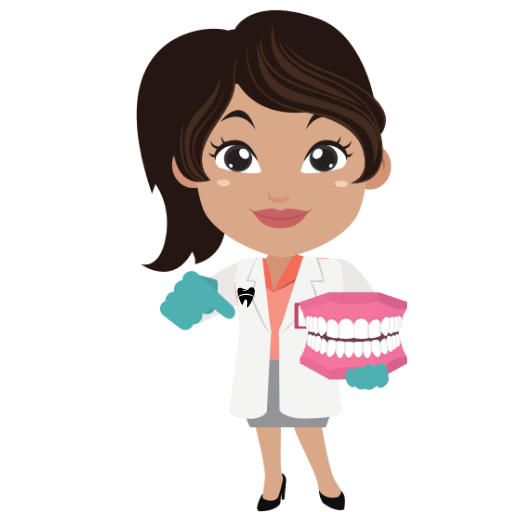Discover the secrets to a healthy smile in step 2 of our brushing basics series: flossing. Learn why this crucial practice is vital for oral health.
1. Building on Brushing: Why Flossing is the Next Essential Step for a Healthy Smile
Flossing is often overlooked in dental hygiene routines, yet it plays a crucial role in maintaining a healthy smile. While brushing removes food particles and plaque from the surfaces of our teeth, it fails to reach areas that toothbrush bristles cannot access. This is where flossing becomes indispensable. By using a thin piece of floss, you can clean between your teeth and along the gumline, preventing the buildup of plaque and reducing the risk of gum disease.
The benefits of flossing are numerous and cannot be ignored. Incorporating flossing into your daily oral care routine helps to:
– Remove plaque and food debris between teeth: Flossing reaches the tight spaces between your teeth, where bacteria often accumulate. By removing this plaque, you minimize the risk of tooth decay and cavities.
– Prevent gum disease: Flossing not only removes plaque but also helps prevent gum disease. Regular flossing reduces inflammation along the gumline, preventing gingivitis and the more advanced periodontitis.
– Freshen your breath: Flossing doesn’t just prevent oral health issues; it also keeps your breath fresh. By removing trapped food particles and bacteria, you eliminate the source of bad breath.
Remember to floss gently, using a back-and-forth motion and sliding the floss up and down against each tooth’s surface. Aim to floss at least once a day, preferably before bedtime. By making flossing a habit, you’ll enhance your brushing routine and achieve a sparkling smile that reflects your commitment to excellent oral health.

2. Unleashing the Power of Flossing: The Key to Maintaining Optimal Oral Hygiene
Flossing is a crucial part of maintaining excellent oral hygiene and is often overlooked. Here are a few reasons why flossing should be an essential part of your daily dental care routine:
- Removes plaque and food particles: While brushing helps clean the surfaces of your teeth, flossing is essential for removing plaque and food particles that get stuck in between your teeth and along the gum line. Flossing allows you to reach these areas that a toothbrush cannot, preventing the buildup of bacteria and reducing the risk of tooth decay and gum disease.
- Prevents bad breath: The food particles lodged between your teeth can contribute to unpleasant breath. Regular flossing helps eliminate these particles, giving you fresher breath. It’s a simple, effective way to enhance your overall oral hygiene routine.
- Protects against gum disease: Flossing is one of the best ways to prevent gum disease. By removing plaque and bacteria from between your teeth, you reduce the risk of infection or inflammation of the gums. This proactive approach can help maintain the health of your gums and prevent more serious dental problems in the future.
So, don’t forget to include flossing as a regular part of your oral care routine. It can make a significant difference in your dental health and overall well-being.
3. Exploring the Benefits: How Flossing goes Beyond Brushing for Complete Oral Care
Flossing is an essential part of maintaining good oral hygiene and goes beyond just brushing your teeth. Here are some key benefits that make flossing an integral part of your daily oral care routine:
- Removes plaque: While brushing helps to clean the surfaces of your teeth, it is unable to reach the tight spaces between your teeth and along the gumline. Flossing effectively removes plaque buildup from these areas, preventing tooth decay and gum disease.
- Prevents bad breath: Regular flossing helps remove food particles and bacteria from between your teeth, which are major culprits of bad breath. By incorporating flossing into your routine, you can keep your breath fresh and clean.
- Reduces the risk of gum disease: Flossing plays a crucial role in preventing gum disease. When plaque accumulates along the gumline, it can cause inflammation and infection, leading to gingivitis or even periodontitis. By flossing daily, you can significantly reduce the risk of developing these gum conditions.
Overall, flossing complements brushing by targeting the areas that a toothbrush cannot reach. It is an effective way to maintain optimal oral health and prevent dental problems in the long run. Make sure to include flossing as part of your daily oral care routine to achieve complete oral hygiene.
4. Mastering the Technique: Proven Methods for Effective and Efficient Flossing
Flossing is an essential part of maintaining good oral hygiene. However, many people struggle with finding an effective and efficient flossing technique. Fortunately, there are proven methods that can help you master the art of flossing and ensure that you are getting the most out of your oral care routine.
To get started, here are some key tips to remember:
- Select the right floss: There are various types of floss available, including waxed, non-waxed, and flavored options. Choose the one that suits your preference and fits comfortably between your teeth.
- Use the correct amount: Cut a piece of floss that is around 18 to 24 inches long. This will allow you to use a fresh section of floss for each tooth and prevent the spread of bacteria.
- Proper technique: Hold the floss tightly between your fingers and guide it gently between each tooth, making a C shape around the tooth. Move the floss up and down to remove plaque and debris.
Remember to floss at least once a day, preferably before brushing your teeth. With consistent practice and these proven methods, you’ll become a pro at flossing in no time, maintaining a healthy and happy smile.
5. Beating the Plaque: How Flossing Helps Prevent Dental Problems and Gum Disease
Flossing is a crucial step in maintaining good oral hygiene and preventing dental problems, such as gum disease. It reaches areas between the teeth that may be missed by brushing alone, effectively removing plaque and debris. Here are some key points to understand how flossing can help you maintain a healthy smile:
- Plaque removal: Flossing allows you to remove plaque, a sticky film of bacteria that constantly forms on and between teeth. By removing plaque, you reduce the risk of developing cavities and gum disease.
- Preventing gum disease: Gum disease occurs when plaque buildup leads to an infection in the gums. Flossing helps remove plaque from the gumline, preventing bacterial build-up and reducing the risk of gum disease.
- Reaching tight spaces: Using dental floss enables you to access tight spaces where toothbrush bristles can’t reach. These areas are breeding grounds for bacteria and food particles that can contribute to tooth decay and gum problems.
- Improving overall oral health: Regular flossing not only helps prevent dental issues but also promotes fresher breath by removing trapped food particles and bacteria. It also contributes to healthier gums, reducing the risk of tooth loss and the need for extensive dental work.
Make sure to incorporate flossing into your daily oral care routine along with brushing and regular dental check-ups. By doing so, you’ll be taking proactive steps to maintain optimal dental health and keep your smile shining bright!
6. Flossing Made Easy: Innovative Tools and Options for Effortless Oral Hygiene
Flossing is an essential part of maintaining oral hygiene, but sometimes it can feel like a chore. Luckily, there are innovative tools and options available that make flossing easier and more convenient than ever before.
Here are some of the top tools and options that can help streamline your flossing routine:
- Water flossers: These handy devices use a concentrated stream of water to remove plaque and food particles from between your teeth and along the gumline. Water flossers are particularly beneficial for those with braces, implants, or sensitive gums.
- Floss picks: If traditional flossing is challenging for you, floss picks might be the solution. These small, disposable tools feature a short piece of floss attached to a handle, making it easier to reach between teeth and around dental work.
- Eco-friendly floss options: For those concerned about the environment, there are now eco-friendly floss alternatives available. Look for options made from biodegradable materials, such as silk or plant-based fibers.
With these innovative tools and options, flossing doesn’t have to be a hassle anymore. Incorporating these easy-to-use products into your oral hygiene routine will help keep your teeth and gums healthy without the extra effort or frustration.
7. Flossing FAQs: Answering Common Questions to Strengthen Your Flossing Routine
So, you’ve decided to prioritize your oral health and incorporate flossing into your daily routine. Good for you! However, we understand that you may have some questions about flossing techniques, tools, and the benefits it brings. To help you out, we’ve gathered answers to some of the most common flossing FAQs.
How often should I floss?
To maintain optimal oral hygiene, dentists recommend flossing at least once a day. Consistency is key! By removing food particles and plaque between your teeth and along the gumline, flossing helps prevent cavities and gum disease.
Which type of floss should I use?
The choice of floss is mostly based on personal preference and the spaces between your teeth. Traditional floss, typically made of nylon or silk, is versatile and easy to use in most cases. However, if you have gaps or bridges, a floss threader or specialized floss may be more suitable. Ultimately, the most important factor is using a flossing tool that allows you to effectively reach all areas of your mouth.
Can’t I just use a water flosser instead?
While water flossers can be a helpful addition to your oral hygiene routine, they should not replace traditional flossing completely. Water flossers can remove larger debris, but they may not be as effective in removing plaque and food particles stuck tightly between teeth. To achieve the best results, we recommend using a combination of both traditional floss and a water flosser, if desired.
8. Turning Flossing into Habit: Tips and Tricks for Incorporating this Crucial Step into Your Daily Routine
Flossing plays a vital role in maintaining optimal oral health, yet many people struggle to make it a daily habit. Fortunately, with a few simple tips and tricks, you can easily incorporate this crucial step into your routine:
- Set a reminder: Use your smartphone or a sticky note to remind yourself to floss daily. Place the reminder somewhere visible, like your bathroom mirror or toothbrush holder, to keep it top of mind.
- Start slow: If you’re new to flossing, don’t overwhelm yourself by attempting to floss all your teeth at once. Begin by flossing a few teeth each day, gradually increasing the number until you’re flossing your entire mouth.
- Find the right floss: With various types of floss available, finding one that suits your preferences can make the experience more enjoyable. Whether you prefer waxed, flavored, or wider floss, choose the one that feels comfortable and meets your needs.
- Reward yourself: Celebrate your flossing achievements! Treat yourself to a small reward, such as a favorite snack or an episode of your favorite TV show, after completing your daily flossing routine. This positive reinforcement can help solidify flossing as a habit.
By incorporating these practical tips into your daily routine, you’ll be well on your way to making flossing an effortless habit. Remember, consistency is key, and your oral health will thank you for it!
Incorporating flossing into your oral care routine is crucial for maintaining optimal oral health. By removing plaque and debris from between teeth, you can prevent tooth decay and gum disease. Make flossing a daily habit and experience the benefits of a healthy smile.
